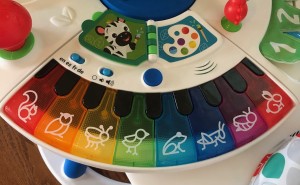Every now and then I come across a little fact that makes me feel my age. Fifty years ago this month a one-hit wonder named Terry Jacks released the single “Seasons In The Sun”, which parked at #1 on the music charts for three weeks and burned itself into my twelve-year old brain forever. Any teen from back then will never forget the We had joy, We had fun lyrics. Ironically it wasn’t a happy song (as in …goodbye Papa, it’s hard to die…) but not to worry. Today I want to talk about the season before the sun instead.
 Whether you celebrate Easter (this Sunday), the vernal equinox (a week ago Tuesday), or college basketball’s March Madness (on-going), the hints are everywhere: spring is beginning to, uh, spring. For my wife and I, the season means strawberries, when the best of the fruit is available for the next sixty days. For others it means the kids are out of school for a week. But surely there’s no better indication of spring than flowers. The bright bursts put winter’s doldrums behind us while the sun shines more often. Flowers signify new beginnings.
Whether you celebrate Easter (this Sunday), the vernal equinox (a week ago Tuesday), or college basketball’s March Madness (on-going), the hints are everywhere: spring is beginning to, uh, spring. For my wife and I, the season means strawberries, when the best of the fruit is available for the next sixty days. For others it means the kids are out of school for a week. But surely there’s no better indication of spring than flowers. The bright bursts put winter’s doldrums behind us while the sun shines more often. Flowers signify new beginnings.

Guys don’t talk about flowers much (unless we’re gardeners) but it doesn’t mean we haven’t had our share of close encounters with them. My first was probably with dandelions (yes, they’re flowers) and the childhood fascination of blowing the blooms into countless flying bits. Growing up in Southern California also meant going to the Rose Parade, where the bigger floats average more than 50,000 flowers. Senior prom was probably the one and only time I bought flowers in high school. Call a wrist corsage awkward if you will, but hey, it beats the terror of pinning flowers on a girl’s dress.

Speaking of awkward, when I first met my wife in college I decided to be coy and send flowers, forcing her to make the next move. But fate played a part when the bouquet was delivered to the wrong dorm, the flowers wilting at the front desk for days. I didn’t hear from her for a while and she didn’t hear from me, and that meant we were thinking nasty thoughts about each other. “Ungrateful” (my end). “Loser” (hers). Another girl finally let her know about the flowers and it’s a good thing she found out. A marriage was saved!

If you’re thinking my spend on flowers is below average, I’m confident I made up for it in a single day: at my daughter’s wedding. Her bouquet, her bridesmaids’ bouquets, down the aisle, around the altar, at the centers of the reception tables, and on and on – the blooms were everywhere. Let’s just say the cost of all that color was probably enough to buy a small car.
I’ve brought home several flower bouquets over the years, whether to my wife or to my mother. What used to be an in-shop, DIY experience is now pretty much Amazon, where you click your way through the colorful screens of 1-800 FLOWERS or FTD to create the perfect arrangement. And as you know, you rarely get the exact look you choose from the photos. The fine print protects the companies by stating something like “depending on availability”.
 I like to bake (which is not the same as “to cook”), so when someone says “flower” I’m thinking “flour”. After all, flour is to baking as flowers are to spring. Flowers wouldn’t taste good in my chocolate-chip cookies, but you do find them in other foods. Top your soup with a squash blossom, your tea with chamomile flowers, or your salads with calendulas, pansies, or marigolds. Not for me; no thanks. When it comes to flowers as food additives I might be tempted to say, “the bloom is off the rose”.
I like to bake (which is not the same as “to cook”), so when someone says “flower” I’m thinking “flour”. After all, flour is to baking as flowers are to spring. Flowers wouldn’t taste good in my chocolate-chip cookies, but you do find them in other foods. Top your soup with a squash blossom, your tea with chamomile flowers, or your salads with calendulas, pansies, or marigolds. Not for me; no thanks. When it comes to flowers as food additives I might be tempted to say, “the bloom is off the rose”.

Okay, so I went through the lyrics of “Seasons In The Sun” again and noticed …now that the spring is in the air, with the flowers everywhere… , so… what do you know? Terry and I are talking about the same season after all. At least this one lyric brings a little joy and fun to an otherwise depressing song. It’s what this kid born in the 1960s might call “flower power”.
Blogger’s note: “Seasons In The Sun” really was #1 on the music charts exactly fifty years ago this month. My wife and I bought strawberries last weekend, which had me thinking about seasons, which had the song bouncing around in my brain. But the fifty-years thing is an eerie coincidence, don’t you agree? Maybe a higher flower power is at work here.
Some content sourced from Wikipedia, “the free encyclopedia”.












































